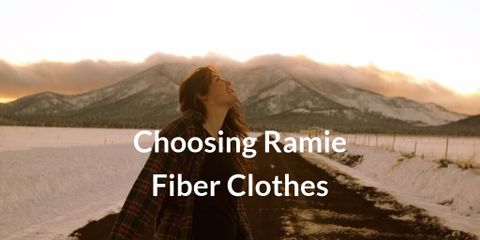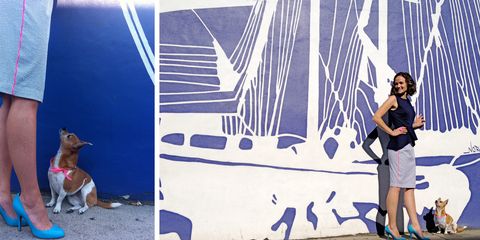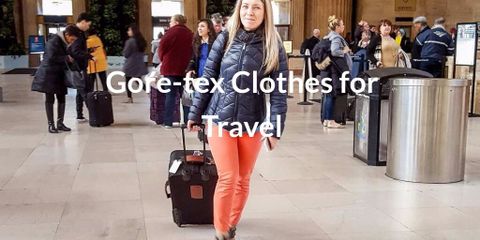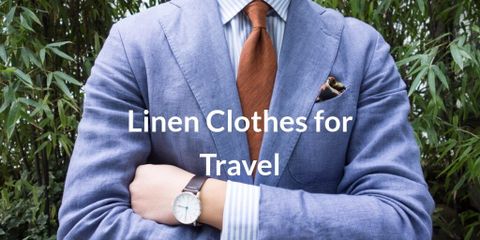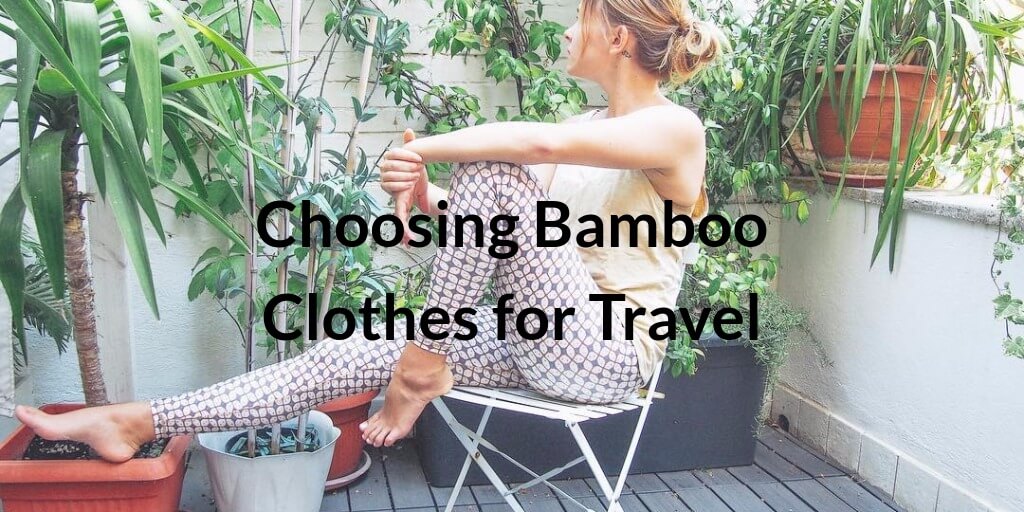
Why You Should Choose Bamboo Clothing for Your Trips
Don’t you love man’s (and woman’s) ingenuity and creativity? It astounds me that a grass like bamboo can be turned into so many useful things.
I found a wonderful Asian saying: “A man is born in a bamboo cradle and goes away in a bamboo coffin. Everything in between is possible with bamboo!”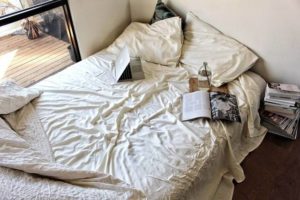
If you’re a traveler, you might be surprised by how much you will encounter bamboo.
- The roads and bridges you drive on;
- the house you stay in;
- the fuel you use for cooking and heating;
- the food you eat; the super soft towels in your hotel;
- medicines you may buy from Ayurvedic or herbal practitioners;
- art, music and religious ceremonies that you may participate in;
- the peaceful grottos you sit in for meditation;
All of them may have bamboo at their base. Activated bamboo charcoal works in your water purifier, and some even recommend it to whiten your teeth!
And, of course, you may be wearing bamboo!
Is bamboo fabric a natural product?
Is fabric made from bamboo a natural product or is it man-made? The answer depends on how it’s manufactured.
 The fabric is made from fibers in the stalk of bamboo, so it’s from a natural source. The traditional way is to leave cut stalks in water to soften them, (this is called “retting”), then to pull the fibers apart by hand and to clean, comb and spin them into a yarn. The fabric made through this process is called bamboo linen.
The fabric is made from fibers in the stalk of bamboo, so it’s from a natural source. The traditional way is to leave cut stalks in water to soften them, (this is called “retting”), then to pull the fibers apart by hand and to clean, comb and spin them into a yarn. The fabric made through this process is called bamboo linen.
This is very time consuming and too expensive for most commercial uses of bamboo, so the retting process is replaced by a chemical one. Some manufacturers use a natural enzyme, but most use sodium hydroxide, carbon disulfide, and bleach.
The resulting pulp is pushed through a machine that looks a bit like a shower head to force it into long thin fiber shapes. The result is a “regenerated” or man-made fiber. The fabric made from this process is called rayon from bamboo, or viscose from bamboo.
Is bamboo fabric eco-friendly?
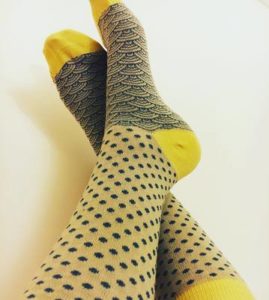 Other rayons from man-made fibers include Tencel and Modal, made from eucalyptus and beech trees, respectively, rather than bamboo. They can be produced through a “lyocell” process, which involves nontoxic chemicals and a closed loop recycling process. So, they can be more comfortably termed environmentally friendly than the rayon from bamboo.
Other rayons from man-made fibers include Tencel and Modal, made from eucalyptus and beech trees, respectively, rather than bamboo. They can be produced through a “lyocell” process, which involves nontoxic chemicals and a closed loop recycling process. So, they can be more comfortably termed environmentally friendly than the rayon from bamboo.
Bamboo fabrics are somewhat problematic because their source is extremely eco-friendly – bamboo is one of the most sustainable and environmentally friendly plants in the world – but the manufacturing process for fabric uses chemicals that can be toxic.
This is the opposite of cotton. If the cotton is not organically grown it uses an incredible amount of pesticide, herbicide, and water as it is growing, but the manufacturing process to turn it into fabric is usually eco-friendly.
How is bamboo fabric labeled?
We usually see garment labels indicating the amount of cotton, wool, silk, hemp, etc in a fabric, together with washing instructions. This is because they are natural fibers.
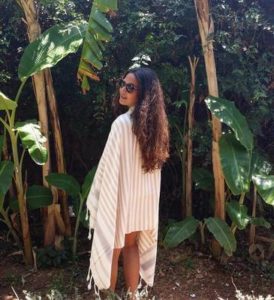 The fabric made from bamboo is technically from a man-made fiber, and the labels for man-made fabrics don’t list their ingredients. For example, we don’t see petroleum listed on the label of a polyester garment, or wood as a component of lyocell, Tencel or Modal.
The fabric made from bamboo is technically from a man-made fiber, and the labels for man-made fabrics don’t list their ingredients. For example, we don’t see petroleum listed on the label of a polyester garment, or wood as a component of lyocell, Tencel or Modal.
For this reason, regulations in the USA, Canada, and the EU say fabric from bamboo must be labeled as rayon or viscose. The label on your garment might read “rayon from bamboo”.
Be on the lookout for labels that show how careful the manufacturer is. For example, a label that says, “Tested for Harmful Substances according to Oeko-Tex Standard 100”, means that the garment has passed about 100 criteria to ensure that it is not harmful to your health.
In Australia, a label that says, “made with certified organic fiber” means that there has been a process to look at the whole supply chain. Be careful, though, as some manufacturers may have a label like “made with organic cotton” – this does not mean that it has been certified.
What does bamboo fabric look and feel like?
Rayon from bamboo can be made to look like silk, cotton, and linen. It can be shiny, like satin, and is often used for the linings of jackets or for evening clothes. It is regularly used as a substitute for cotton.
It’s soft – this is one of its best properties. Many compare it to the feeling of cashmere. This makes it a very good choice for shirts, scarves, blouses, dresses, and wraps. Choose bamboo if you want a fabric that feels soft against your skin and drapes well. It’s a good substitute for wool or hemp if you find these fabrics too scratchy.
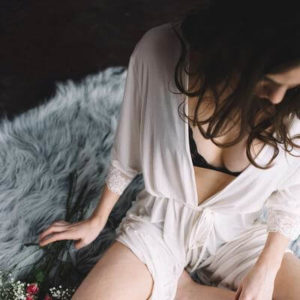 It “breathes” so keeps you comfortable in both hot and cold weather.
It “breathes” so keeps you comfortable in both hot and cold weather.
A great property of bamboo fabric is that it doesn’t pill. Pilling creates those horrible fluffy balls on the surface of the fabric that makes your garment a candidate for the dump!
There’s some debate about whether the chemical processes allow bamboo fabrics to retain the natural “kun” which is an anti-microbial in bamboo. It reduces the growth of bacteria and so reduces odor.
Critics say that all the natural properties of bamboo are removed by the chemical processes. Proponents of bamboo disagree – and certainly, there are many fans who talk about how sweet-smelling their garments remain! I have towels from bamboo in my own home – and they stay fresher for longer than other towels.
There’s no question about how strong a bamboo stalk is. It has the tensile strength of mild steel! This strength is passed on to fabrics made from bamboo, and they don’t wear and fray easily.
It washes easily, in water temperatures up to 60°, and should be dried flat, rather than in a drier.
Which bamboo products should you take on your travels?
You would probably be able to find a bamboo version of any clothing you want. Clothes are likely to be very comfortable to wear and easy to pack. They won’t develop mildew if you pack them while they are a bit damp.
I was interested to see how many varieties of socks are available. Some have up to 95% bamboo with a bit of spandex for stretch; others are 50/50 blends with cotton or wool. I also saw some interesting blends of bamboo, nylon, and spandex for knee-high socks to be worn under long boots.
Socks from bamboo fabric can be quite thin and smooth for formal wear and thick and rugged if you are on a hiking trip. It seems that you can pull on bamboo socks in one move rather than having to pull socks on in separate actions!
So …. bamboo fabrics may not be as “green” as you thought, but they remain a good choice for traveling.
Written By Kate Mark

Kate is a mid-lifer who quit a growing corporate career to reawaken her passions and her lifelong dream of traveling the world.
